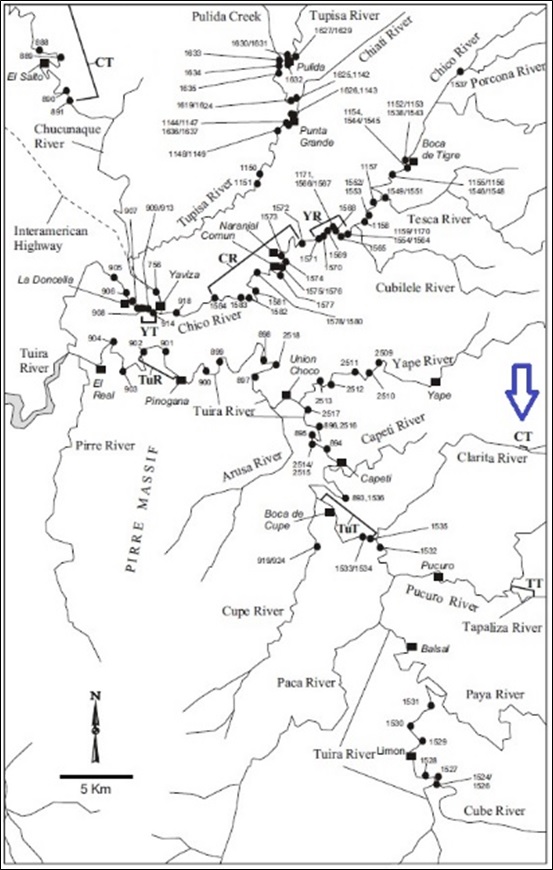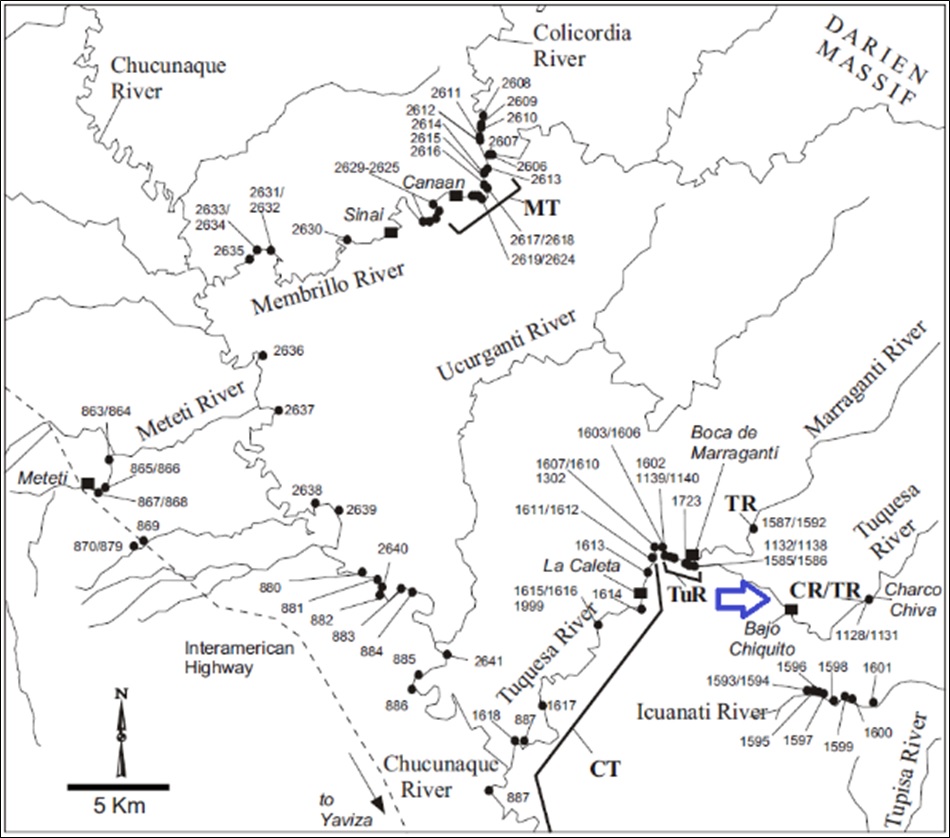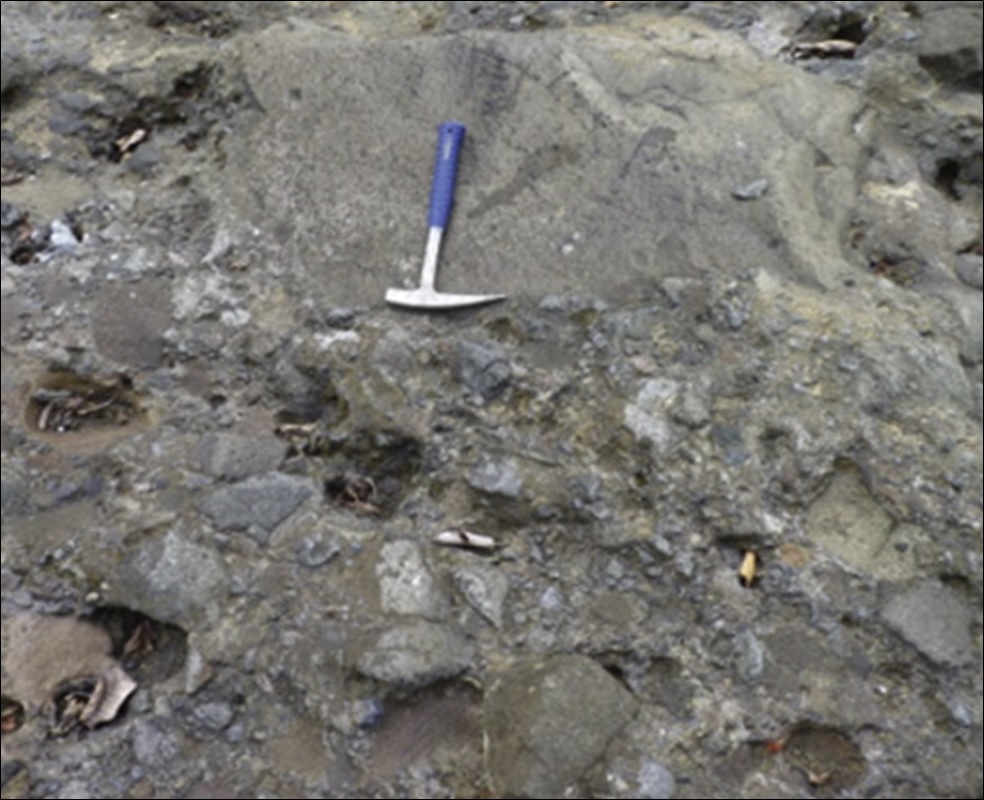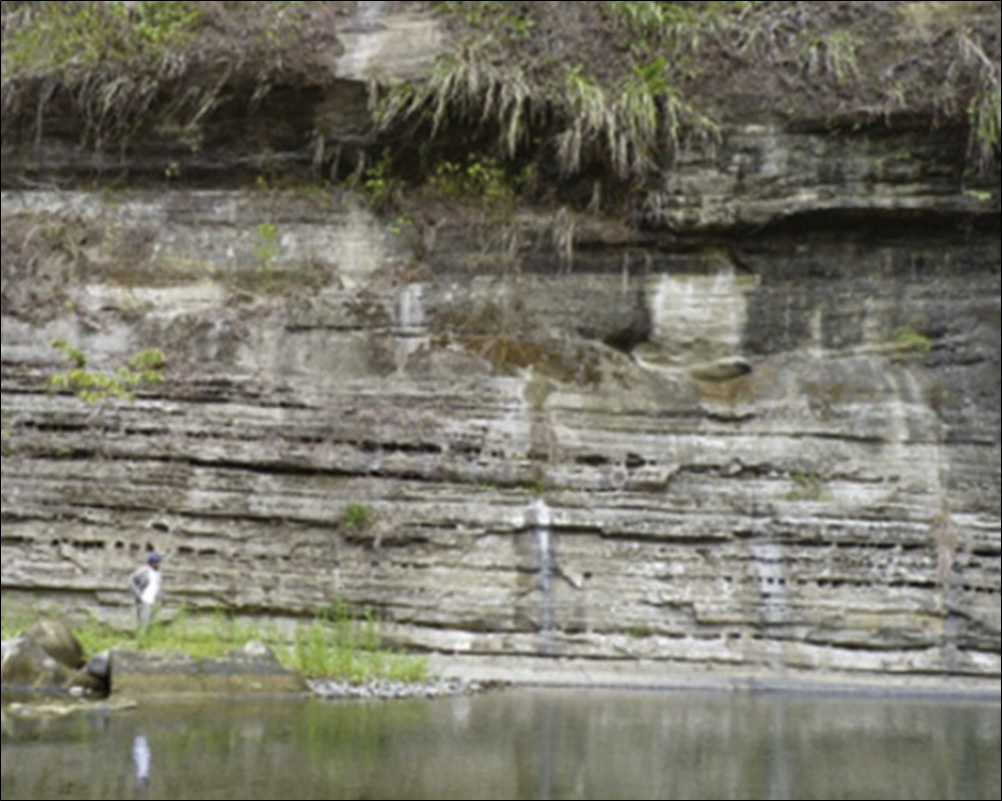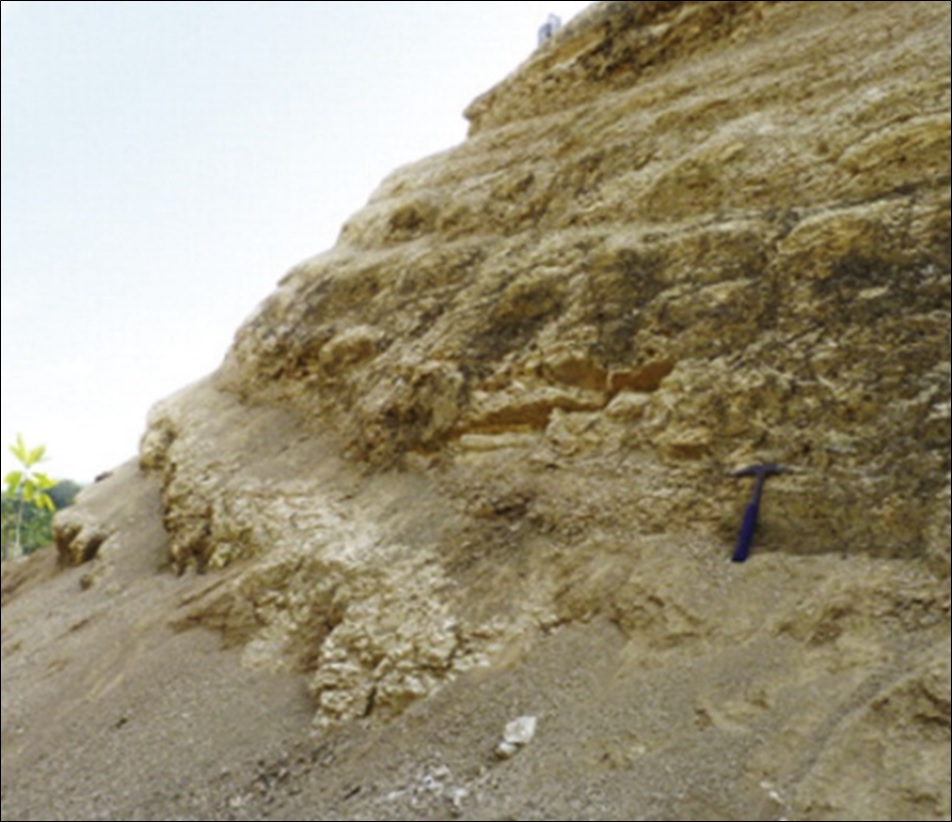Clarita Fm
Type Locality and Naming
- Sapper (1937). Clarita Limestone is an undefined name which appears on correlation chart for calcareous strata of Middle Oligocene age in the Darien area. Underlies Arusa Fm.
- The formation was named by Shelton (1952) for the Clarita River and redefined by Coates et al. (2004). Río Clarita is a small stream about 30km ESE of El Real de Santa Maria. It flows into Río Capetí, which is a southwestward flowing tributary of Río Tuira.
- The Clarita Fm crops out in the area of the Massifs of Majé and Sanson Hills, and the Basins of Chucunaque–Tuira and Sambu. The stratotype ("CT" on Figure 1) is located on the Clarita River. A reference section studied and named in Coates et al. (2004) is exposed at Charco Chiva ("CR" on Figure 2), about 9 km east southeast of Boca de Marraganti, on the Tuquesa River.
[Figure 1. Locality of the Clarita Fm’s stratotype (CT, marked with a blue arrow). Coates et al. (2004)]
[Figure 2. Locality of the Clarita Fm’s Ref. Section (CR, marked with a blue arrow). Coates et al. (2004)]
Synonym: Clarita Limestone; Clarita Limestone Fm
Lithology and Thickness
Barat et al. (2014) summarize the Clarita Fm has being made up of clastic sediments with a high content of carbonate fossiliferous clasts. The base of the Clarita Fm is composed of conglomerates and reworked adakitic-like volcanic clasts, as noted in the Majé Massif. The remaining higher stratigraphic sequence alternates between breccia, conglomerate (Figure 3), sandstone, thick layers of calcarenite (Figure 4) and fossiliferous sandstone dated as Early Miocene. The very top of this formation consists of siliceous and calcareous fine tuff and mudstone, located in the Sanson Hills Massif (Figure 5).
Thickness: Its thickness has a minimum of 200 m and a maximum of 2000 m at the center of the Chucunaque–Tuira Basin, according to Coates et al. (2004).
[Figure 3. Outcrops of breccias to conglomerates from the Majé Massif, Clarita Fm (8.94667°, −78.53119°, WGS84). Barat (2013) and Barat et al. (2014).]
[Figure 4. Calcarenites of Burdigalian from the Majé Massif, Clarita Fm (8.94656°, −78.52829°, WGS84). Barat (2013) and Barat et al. (2014).]
[Figure 5. Calcareous shales of Early–Middle Miocene, from the Sanson Hills, top of the Clarita Fm (8.61528°, −78.12849°, WGS84). Barat (2013) and Barat et al. (2014).]
Relationships and Distribution
Lower contact
Upper contact
Regional extent
GeoJSON
Fossils
Age
Depositional setting
Additional Information
- Sapper (1937).
- Shelton (1952)
- Wilson et al. (1957) mentions Clarita Limestone of Lower Oligocene age.
- Woodring (1960). Río Clarita is a small stream about 30 kilometers east southeast of El Real de Santa Maria, in Darien area.
- Coates et al. (2004).
- Barat et al. (2014).
